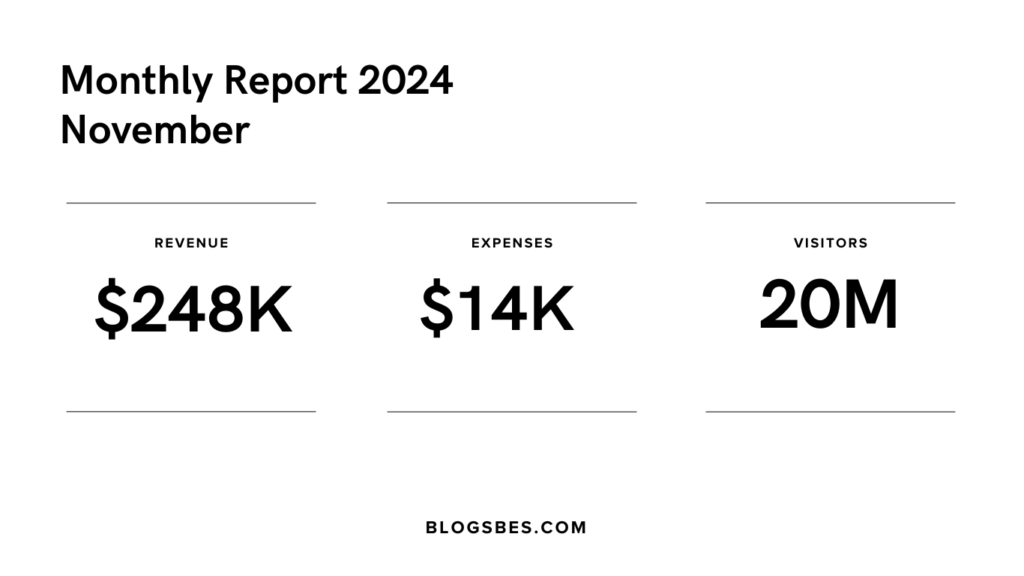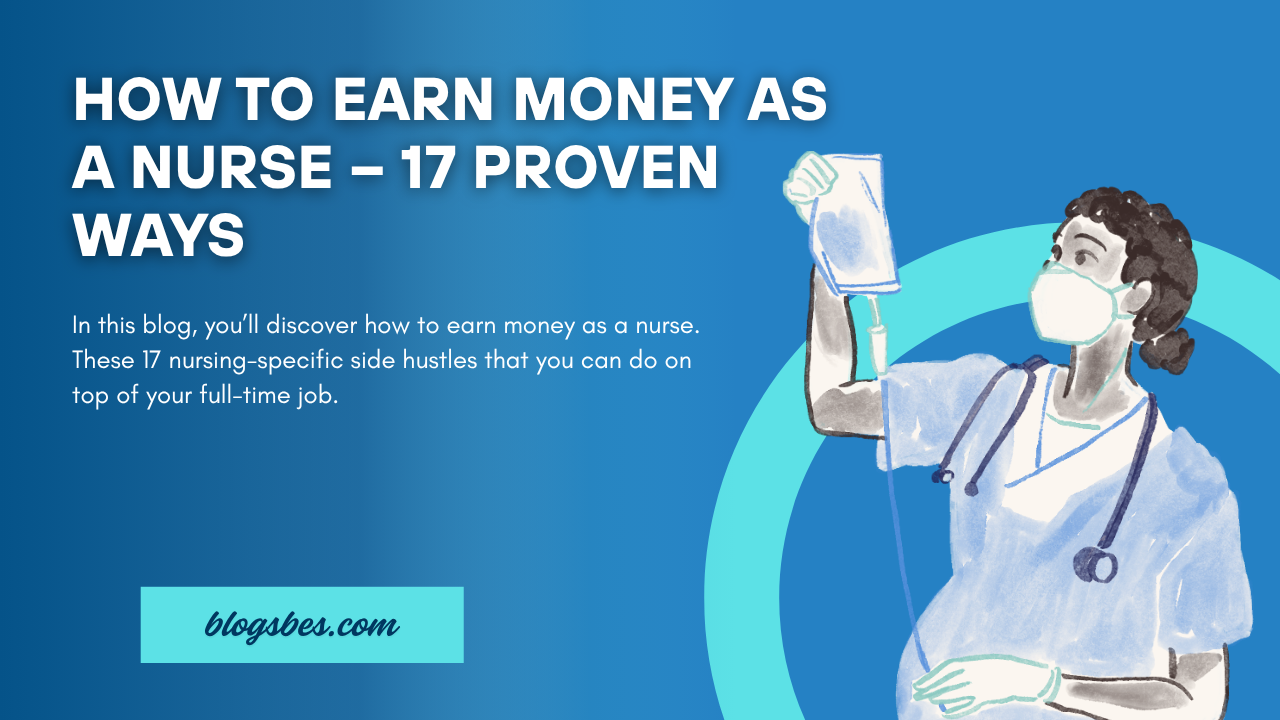Pinterest arguably has the largest number of Visitors with a “buyer” mindset
This only means people are ready to spend and are constantly looking for inspiration & buying things based on that inspiration or trend.
And that is where the potential to make money lies here.
Making money on Pinterest involves leveraging its platform to drive traffic, engage an audience, and monetize that engagement.
In a few years, this blog has received over 10 million users & made over $335,000 from Pinterest; this very fact makes me so bullish when it comes to leveraging it to make a side hustle for yourself.
Even if you’re not selling something (yet) or have nothing to offer, you still can make a great deal from Pinterest.
Let’s take my case for example,
I have never sold anything on Pinterest or on my blog. But somehow, I earned over $435k in revenue; HOW?
I make a massive chunk of my income through ads and some with affiliate marketing, in which I don’t have to sell anything.
Bloggers often use Pinterest to drive website traffic. But I’ve seen among people who do not publish online that they have no idea what Pinterest is.
“…Ohhh Pinterest? Is that a “food recipe & outfit inspiration” platform? Mostly women use it, right?…”
That is:
- Intent – How people have a buying intent right from the get-go
- Outbound links – How that platform encourages its users to click links to go to a different site
- Shelf Life of a pin – How a pin does not extinguish quickly & can get you consistent traffic for years.
How do I make money from Pinterest? Ads and affiliate programs!
Here are some ways (along with ads and affiliates):
1. Drive Traffic to Ad-Monetized Blogs or Websites:
Use Pinterest to drive traffic to your blog or website that makes money through ads, sponsored content, or selling products/services. High-quality, engaging pins that lead to valuable content can increase your site’s visitors and revenue.
When people come to read a blog, apart from the text, images, or videos, they are also served with ads.
Each time a reader sees or clicks on those ads, the site owner gets a little bit of revenue, called a PPI (pay-per-impression) type of ad.
In this model, the user gets free content, the publisher gets paid, and the ad network (the network that facilitates this exchange) also gets a share; it’s a win-win-win.
It is calculated per RPM (rate per millie), rate per thousand views. The more people see or click those ads, the more you earn.
For example, I’ve made about $450,000 just from ads From an ad network (Google Adsense), and that too with around 5 million sessions, and since the RPM shows an amount of $50.65, it means per thousand sessions, this blog made around $50.65
2. Affiliate Marketing:
Promoting other businesses or people’s products in your content with your customized links gives you a percentage of that sale (affiliate commission); this is another way I make money on this blog.
Also, you can share pins that include affiliate links to products you recommend. When someone purchases through your link, you earn a commission.
However, you must ensure you disclose affiliate links to comply with Pinterest and legal guidelines.
So apart from that $250k, this blog had earned around $85k in affiliate commissions.
Other than that, having a blog opens many other income opportunities, such as:
- Selling courses that people sell and make hundreds of thousands,
- You can sell ebooks.
- Publish branded/sponsored posts,
- Start a subscription-based email list
possibilities are endless.

3. Promote Your Products or Services:
With your own products or services, Pinterest can be an effective platform to increase visibility and sales.
This strategy involves creating pins that directly showcase what you’re offering.
Whether selling handmade goods, digital products like ebooks or courses, or offering services such as consulting or design work, Pinterest can help you reach a wider audience.
This strategy involves creating pins that directly showcase what you’re offering.
Whether selling handmade goods, digital products like ebooks or courses, or offering services such as consulting or design work, Pinterest can help you reach a wider audience.
Link to Your Shop or Website
Each pin should directly link to where the user can learn more about the product or service or make a purchase. This could be a product page on your online store, a landing page for your service, or an Etsy shop. The easier it is for someone to go from Pinterest to making a purchase, the better.
Boards for Different Categories
Organize your pins into boards based on different categories or themes. This can help users navigate your offerings more easily. For example, if you sell jewelry, you might have separate boards for necklaces, earrings, and bracelets.
2. Seasonal or Thematic Campaigns
Take advantage of seasonal trends or themes related to your niche. Create special pins or boards for holidays, seasons, or events that relate to your products or services. This can help capture interest at times when users are more likely to be searching for related items.
Utilize Pinterest Features:
Pinterest offers various features like Rich Pins, which allow you to add extra information about what you’re selling directly on the pin. There are also options for shopping ads and promoting your pins to reach a larger audience.
Link to Your Shop or Website
Each pin should directly link to where the user can learn more about the product or service or make a purchase. This could be a product page on your online store, a landing page for your service, or an Etsy shop. The easier it is for someone to go from Pinterest to making a purchase, the better.
Boards for Different Categories
Organize your pins into boards based on different categories or themes. This can help users navigate your offerings more easily. For example, if you sell jewelry, you might have separate boards for necklaces, earrings, and bracelets.
Best Practices
- Transparency: Be transparent about sponsored content by disclosing partnerships to your audience. Pinterest and regulatory bodies require you to indicate clearly when content is sponsored.
- Maintain Authenticity: Choose brand partnerships that align with your values and interests. Authentic endorsements are more likely to resonate with your followers and result in successful collaborations.
- Quality Content: Even when creating sponsored content, maintain high standards for quality and creativity. Your content should still provide value to your audience, whether through inspiration, information, or entertainment.
Monetization and Growth
- Negotiate Terms: When entering into brand partnerships, negotiate terms that benefit both parties. This can include payment, the scope of the content, and how it will be promoted.
- Expand Opportunities: Successful brand partnerships can lead to more opportunities. Brands often look for influencers who can deliver results, so each partnership can be a stepping stone to further collaborations.
Brand partnerships on Pinterest require a balance between maintaining your authenticity and creatively incorporating promotional content. By building a strong, engaged following and aligning with brands that resonate with your audience, you can create valuable, sponsored content that benefits both you and the brands you partner with.
5. Offer Pinterest Virtual Assistant Services:
It involves leveraging your expertise in Pinterest marketing to provide specialized services to businesses or individuals looking to enhance their presence on the platform.
As a Pinterest Virtual Assistant (VA), you could offer various services tailored to your clients’ needs.
These services might include creating and scheduling pins, optimizing boards, researching keywords to improve SEO, analyzing account performance to adjust strategies, and managing paid Pinterest advertising campaigns.
Your role would be to help your clients grow their audience, increase traffic to their websites or online stores, and ultimately boost their sales or brand visibility through effective Pinterest strategies.
This path requires a solid understanding of Pinterest’s best practices, trends, and analytics tools.
It’s an opportunity to monetize your Pinterest skills by helping others succeed on the platform, catering to those who recognize the value of Pinterest for business but don’t have the time or expertise to manage it themselves.
6. Teach Pinterest Marketing:
Teaching Pinterest marketing involves sharing your expertise with individuals or businesses aiming to enhance their presence on the platform or utilize it effectively for their goals. If you have a solid understanding of Pinterest, including strategies for creating compelling content, optimizing for search engine, increasing followers, and driving website traffic, you can turn this knowledge into a profitable venture.
You can create and sell resources such as online courses, live webinars, ebooks, or one-on-one coaching sessions. Your audience might include small business owners, bloggers, marketers, or anyone looking to use Pinterest for personal branding or business growth.
By offering well-structured learning materials or personalized support, you not only help others achieve success on Pinterest but also establish yourself as a credible expert in the field. This approach allows you to provide value to learners while creating an additional income stream from your Pinterest marketing expertise.
This approach provides value to those eager to learn and opens up a new revenue stream for you as an professional in Pinterest marketing.

In conclusion,
Making money on Pinterest is a viable option for those willing to invest time and right effort into understanding the platform’s unique capabilities.
From affiliate marketing to offering virtual assistant services or even teaching Pinterest marketing strategies, there are multiple avenues to explore based on your interests and expertise.
Most Related

NADRA Jobs 2025 – Complete Guide to Career Opportunities, Departments & Eligibility

How to Earn 1000 rs Per Day Without Investment Online

How to Earn Money as a Nurse – 17 Proven Ways

